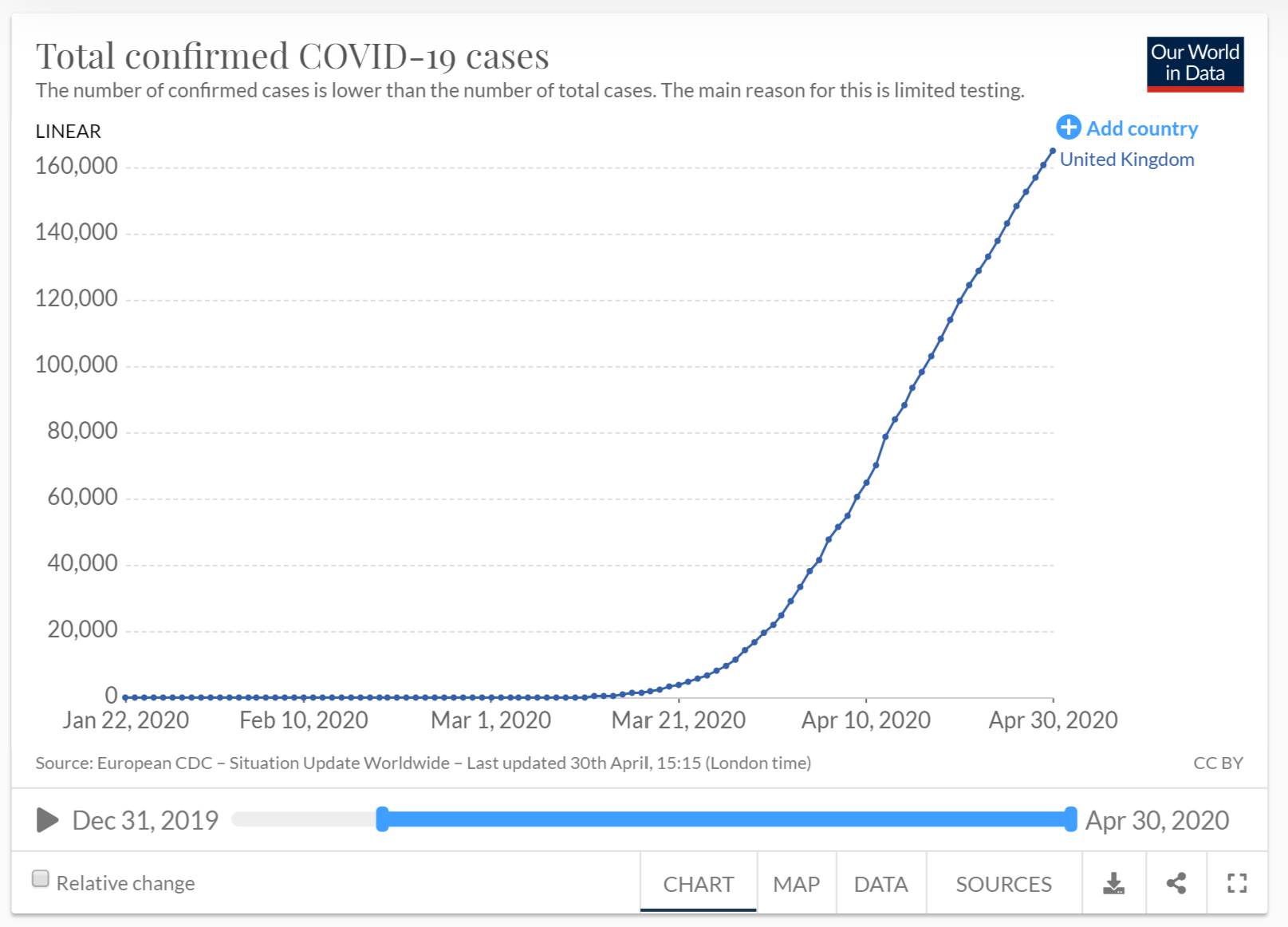How Data Modelling will help your business navigate COVID-19

Reece Cook, Data Scientist at Aiimi, explores how data modelling is providing a trusted port in the storm for organisations affected by the uncertainties of the COVID-19 pandemic.
What impact is lockdown having on my business right now? Will we have an extended lockdown in the UK? Will the current lockdown reduce the spread (R1) to below 1, causing case numbers to shrink? What effect will these various scenarios have on my organisation, employees and customers? These are the kind of difficult questions that, as a Data Scientist, I'm used to helping people answer - though not normally in a situation quite like this one.
Since March, the UK’s COVID-19 lockdown has continued to create an uncertain (and often worrying) climate for many people and businesses. But, where uncertainty is concerned, my first port of call will always be data.
Here’s how some of our customers are using data to help them make the best possible business decisions at a time when fast, sustainable responses really matter.
Harnessing the data that’s out there already

Source: www.ourworldindata.org
Models and growth curves are being distributed by the government and media every day, but many business leaders aren’t always harnessing the opportunity to interpret these and assess the impact of developments on their own organisation. Every business is different, so how can you understand exactly how the situation is likely to affect your organisation, so that your teams can respond accordingly?
The key here is finding – and using - the data that fits your needs. The Open Data Institute have just launched a project to gather vital data related to COVID-19 and make it openly available to other organisations who may benefit from it - from data relating to public health, to consumer demand and business impact. The ODI are offering their support to any organisation needing assistance to share data which could help the world to navigate this pandemic.
Whether you fit into any of the categories for support from the ODI or not, there is a wealth of data at your disposal from existing Government and media sources and, most importantly, held within your own operational systems.
Data modelling in action

Over recent weeks, our data scientists have been looking at the effect that COVID-19 is having on workforce availability (particularly in the case of key workers) for some of our customers. For one of our customers, we needed to fully assess the potential impact and generate insights that could be used to make business decisions. We examined different scenarios which could affect the organisation’s ability to get vital work done. This could be due to employees self-isolating, falling ill, or the impact of lockdown on annual leave patterns.
We worked with the organisation to understand how they prioritise jobs, and which parts of their workforce can do these jobs based on skillsets and geographical location. By analysing historical data, we were able to establish an expected pattern of demand and then look forward into the summer to see if, and how, a potentially reduced workforce would manage to complete these jobs.
The overall problem boils down into three specific issues: understanding 2020’s demand, understanding the effect of COVID-19 on resource capacity, and making sure that we’ve matched their workforce allocation rules as best we can. This last point allows us to generate the most realistic scenarios and mirror how the organisation would likely respond. It also means working closely with Subject Matter Experts (SMEs) and schedulers so that our model works in much the same way they do.
Understanding the impact of different workforce availability scenarios, the organisation can take action now to make sure they can meet future demand and continue to service their customers.
Looking back with historical data analysis
Tesco have been reported as saying that it is impossible to forecast demand in 2020 – but the retail industry isn’t the only one suffering this challenge. With large numbers of people working from home and correctly following the government’s ’Stay Home Save Lives’ guidance, we’ve found that demand profiles have drastically changed for a whole host of sectors. This isn’t a problem that can be solved easily, but data can certainly help businesses in making smart decisions which enable them to see out these challenging times.
By analysing historical data, you can establish what demand looks like in typically good years, bad years and those in between. From this, you can extrapolate a distribution of demand, allowing business leaders to make decisions based on their best and worst-case scenarios.
To help our client understand the impact of demand on their workforce, we built a job allocation system using Python. This has allowed us to test more scenarios faster than existing toolsets while maintaining many of the bespoke rules that govern how the business acts. This system simulates the upcoming months using our best estimates of the organisation’s historical demand, adjusted with the existing and potential effects of COVID-19. We then loop through an ever-growing queue of incoming jobs and compare them against available suitable resource.
To measure the effectiveness of the solution, we defined several Key Performance Indicators (KPIs). For instance, a growing or shrinking backlog is a key indicator of whether there is enough, or too much, capacity to fulfil demand, and Job Resolution Time allows us to see whether customers might be affected by reduced efficiency.
Moving forward, this system will be a great base to build more ‘what if’ scenarios applicable to all sorts of planning management challenges and harnessing even more data sources. Ultimately, the lessons learned from this solution will help our client to better inform more of their decisions.
COVID-19 is creating a great deal of uncertainty for businesses globally, but it is possible to mitigate against this by using data to model what may happen, and how well your organisation is equipped to deal with these scenarios. A data-driven approach can help you take early action to minimise the impact of a major problem – and such close examination of your organisation’s processes will likely lead to significant improvements for business as usual too.
Whenever you’re in a time of uncertainty, data is the first place to look to help you navigate.
Stay in the know with updates, articles, and events from Aiimi.
Discover more from Aiimi - we’ll keep you updated with our latest thought leadership, product news, and research reports, direct to your inbox.
You may unsubscribe from these communications at any time. For information about our commitment to protecting your information, please review our Privacy Policy.



